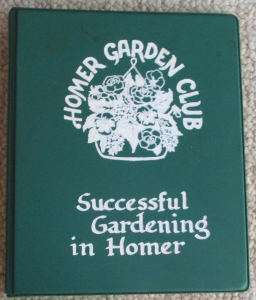A slow start
Last spring I moved to the Homer area with my family. It was late June by the time I got a chance to start a garden. I knew I was going to have a late start, but I have always had a garden, and I knew I could grow something in what was left of the season.
I knew the season was going to be short, so I decided to focus my efforts in the greenhouse. I planted some beans and squash in six inch deep boxes, and planted cabbage, cucumber, and tomato starts in containers. Outside I planted some peas in a small garden bed.
Later in the season, the squash blossoms had mold which killed all the squash despite my best efforts. The beans were being eaten by rodents. The cabbages were the size of oranges. The tomatoes were just starting to bear fruit, and the frost was coming, so we took the larger tomato plants in the house to try to extend the season; after about two weeks one of the tomato plants was dead, and the other was badly mutated. The chickens tipped over the peas and scratched them up, by the time they recovered enough to flower, the frost came and killed them. By this point I knew that gardening was going to be very different here.
Trial and (lots of) error
This year I had big plans. I started squash, cucumbers, pumpkins, tomatoes, peppers, beans, cabbage, broccoli, and more from seeds.
As soon as the snow started to melt, I was eager to get out and get to work, but the ground was still frozen. Weeks later the ground was thawed three inches, day after day I would check it and it would be a little deeper but still too shallow to work. By the time I had my beds ready and a chicken fence put up, it was late June and my poor starts were badly stunted.
I planted peas, beets, spinach, buckwheat, carrots, radishes, turnips, lettuce, cabbage, broccoli, and onions in beds. I made a lot of small mounds and planted potatoes in them. I built a hugelkultur mound for the squash, a technique which has helped me raise hundreds of pounds of squash in the past, but when I planted my squash starts, they got sunburned and were stunted.
This fall, the beets, spinach, carrots, lettuce, onions, cabbage, and broccoli are not doing very well, but the buckwheat, peas, radishes, and turnips are doing great. The potatoes are looking like they will give a good yield. The squash are no longer sunburned and they are less stunted, I might get a few small squash.
A unique place to garden
I know I need to start to prepare beds for next year as soon as this year’s veggies are done. I can tell already how different the climate is here, and how what works elsewhere may not work well here. Luckily for me I have a fountain of knowledge on the topic in the form of Successful Gardening in Homer, by the Homer Garden Club. I got the book for my birthday and I instantly knew it would be useful. The book is based on the experience of dedicated gardeners who have been successful in the Homer area. It gives information on general gardening techniques that work well locally, and a lot of good information specific to the Homer area. It tells about starting seeds, use of flowers, growing trees, successful vegetables, use of wild flowers, about pests and how to prevent them, and more. I have already incorporated some of its expert advice into my future plans. For example, it gives good advice to use lime to amend my acidic soil, but not in the potato bed.
I recently jumped at the chance to get the 2005 Homer Garden Club publication Kachemak Cultivating from Seaside to Summit. This is an updated resource which I also look forward to adding to my knowledge of local cultivation.
To view the Homer Garden Club web site click here
Homer Garden Club. Successful Gardening in Homer.
Homer Garden Club. Kachemak Cultivating from Seaside to Summit: A Guide to Successful Gardening on Alaska’s Southern Kenai Peninsula. Jumbo Jack’s Cookbooks, Audubon Media Corporation, 2005.


It’s nice when you see such a great work! Continue writing